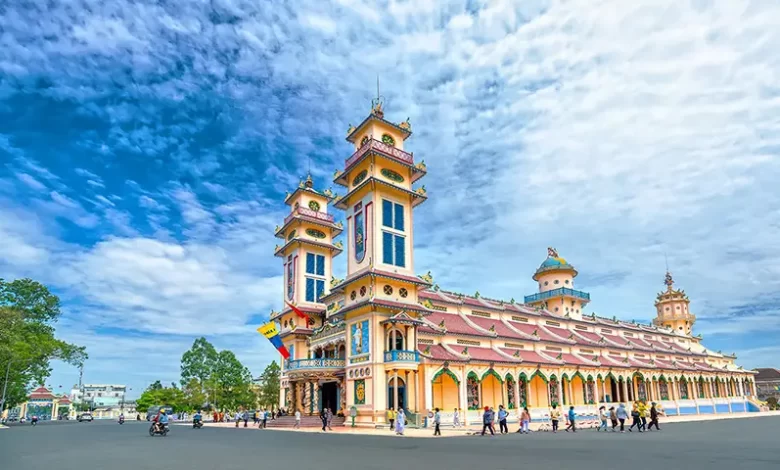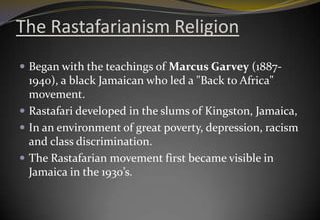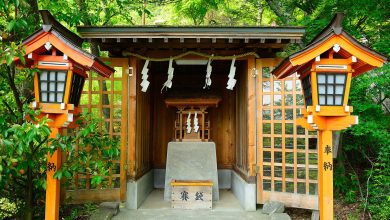Brief Introduction And History of Cao Dai Religion.

Cao Dai is a unique religion from Vietnam. It combines elements from different faiths. Let’s learn about its origins and history.
Credit: commons.wikimedia.org
What is Cao Dai?
Cao Dai means “High Tower” or “High Palace.” The name signifies the supreme being. This religion aims to unite all religions in the world. It believes in one God who created the universe.
Origins of Cao Dai
Cao Dai started in the early 20th century. It was founded by Ngo Van Chieu in 1926. Ngo Van Chieu was a Vietnamese civil servant. He claimed to have received messages from the divine.
First Divine Messages
Ngo Van Chieu began receiving divine messages in 1919. These messages came during séances. He was instructed to establish a new religion. This religion would unite all existing faiths.
The Formation of Cao Dai
In 1926, Ngo Van Chieu and his followers officially founded Cao Dai. They established the Holy See in Tay Ninh, Vietnam. This place became the religion’s center.
The First Worship Services
The first worship services were held in a small temple. They later built larger temples as the number of followers grew. The religion quickly spread across southern Vietnam.

Credit: www.amazon.com
Beliefs and Practices of Cao Dai
Cao Dai blends elements from many religions. It includes teachings from Buddhism, Christianity, Taoism, and Confucianism. Let’s look at some of their core beliefs.
One Supreme Being
Followers believe in one Supreme Being. This being is the creator of the universe. They call this being Cao Dai or the “High Tower.”
Veneration Of Saints
Cao Dai worships saints from different religions. Some famous saints are Jesus Christ, Buddha, and Confucius. They also venerate Victor Hugo and Sun Yat-sen.
Reincarnation
Cao Dai believes in reincarnation. They think the soul is reborn many times. This cycle continues until the soul reaches enlightenment.
Five Precepts
Cao Dai followers adhere to five precepts. These guide their daily lives. The precepts are:
- No killing
- No stealing
- No sexual misconduct
- No lying
- No intoxicants
Important Symbols in Cao Dai
Cao Dai uses various symbols in their worship. These symbols represent their beliefs. Let’s look at some of the most important ones.
The Divine Eye
The Divine Eye is the most important symbol. It represents the all-seeing eye of God. It is often depicted in temples and on altars.
The Sacred Heart
The Sacred Heart represents love and compassion. It is a symbol borrowed from Christianity.
The Yin-yang
The Yin-Yang symbol represents balance. It shows the harmony of opposites. This concept comes from Taoism.
Temples and Worship Practices
Cao Dai temples are unique and colorful. They combine elements from different religious architectures. Let’s explore their worship practices.
Temple Structure
Cao Dai temples have three main parts:
- The Holy See
- The Divine Eye
- The Altar
The Holy See is the central part of the temple. The Divine Eye is usually placed above the altar. The altar is where offerings are made.
Worship Services
Worship services are held four times a day. They occur at 6 AM, noon, 6 PM, and midnight. Followers pray, sing hymns, and make offerings.
Special Ceremonies
Cao Dai has special ceremonies throughout the year. These include:
- New Year Celebration
- Anniversary of the Founding
- Birthday of Victor Hugo
The Growth and Spread of Cao Dai
Cao Dai grew rapidly in Vietnam. It attracted many followers. Let’s look at its growth and spread.
Early Expansion
The religion spread quickly in southern Vietnam. By the 1930s, it had thousands of followers. They built more temples and increased their activities.
Challenges During War
Cao Dai faced challenges during the Vietnam War. The government saw them as a threat. Many temples were closed, and followers were persecuted.
Post-war Period
After the war, Cao Dai began to recover. The government allowed them to practice again. They rebuilt their temples and resumed their activities.
Cao Dai Today
Today, Cao Dai has millions of followers worldwide. They continue to practice their faith and spread their teachings. Let’s look at some modern aspects of the religion.
Global Presence
Cao Dai has spread beyond Vietnam. There are temples in many countries, including the United States, Australia, and Canada. These communities keep the religion alive abroad.
Modern Challenges
Cao Dai faces modern challenges. They work to preserve their traditions. They also strive to adapt to a changing world.
Interfaith Dialogue
Cao Dai promotes interfaith dialogue. They believe in the unity of all religions. They participate in events to foster understanding and peace.
Frequently Asked Questions
What Is Cao Dai Religion?
Cao Dai is a Vietnamese syncretic religion founded in 1926, combining elements of Buddhism, Christianity, Taoism, and Confucianism.
Who Founded Cao Dai Religion?
Cao Dai was founded by Ngo Van Chieu, a Vietnamese civil servant, in the early 20th century.
What Are Cao Dai’s Main Beliefs?
Cao Dai believes in the unity of all religions, the worship of one God, and the practice of ethical living.
Where Is Cao Dai Mainly Practiced?
Cao Dai is primarily practiced in Vietnam, with its Holy See located in Tay Ninh Province.
Conclusion
Cao Dai is a fascinating religion from Vietnam. It blends elements from many faiths. It promotes unity, compassion, and spiritual growth.
From its humble beginnings in 1926, it has grown to have millions of followers worldwide. Despite challenges, it continues to thrive and spread its message of unity and peace.
If you want to learn more about Cao Dai, consider visiting a temple. You can also read more about their teachings and history. This unique religion has much to offer the world.



